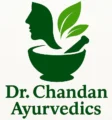Dr. Arun Chandan
In the vapour trails of steam rising from traditional copper stills and modern distillation units across India, a fragrant future is taking shape—the future of Ayurvedic wellness through hydrosols and Arkas. These subtle, water-based botanical distillates—long neglected—are now finding renewed recognition not just in aromatherapy or cosmetics, but as functional, medicinal preparations grounded in Ayurvedic science.
India, with its treasure trove of medicinal plants, its millennia-old traditions of herbal medicine, and its emerging focus on sustainable rural livelihoods, is poised to lead this hydrosol revolution. But to do so, we must combine modern aroma industry processes with classical Ayurvedic protocols and create convergence between research, regulation, and enterprise.
Hydrosols and Arkas: Twin Streams of Ancient and Modern Healing
Hydrosols—also known as hydrolats—are produced through steam or hydro-distillation of medicinal and aromatic plants (MAPs). They contain water-soluble plant compounds along with micro traces of essential oils. In global markets, they are prized in natural skincare, spa therapies, organic agriculture, and functional foods.
However, India’s connection with hydrosols goes much deeper. The concept is not new. It is rooted in Ayurveda’s Arka Kalpana—the science of producing distilled herbal waters known as Arkas (अर्क).
Through my own research in classical Ayurvedic texts listed under the Drugs and Cosmetics Act—including Arka Prakash, Rasendra Sara Sangraha, and Bhaishajya Ratnavali—I confirm that Arka is the classical equivalent of the modern hydrosol, derived through similar processes but with a defined therapeutic and doshic purpose.
Ravana: The Ancient Scholar of Distillation
It is both symbolic and historic that Ravana, the ten-headed scholar-king of Lanka, is said to have authored “Arka Prakash”, one of the most authoritative treatises on Ayurvedic distillates. Ravana was not merely a mythical figure but a scientific mind well-versed in metallurgy, alchemy, and medicinal extractions. His contributions to the distillation science of herbal waters—what we today call hydrosols—must be recognized as foundational.
This underscores the fact that Arka is not a new-age wellness product but a classical, time-tested Ayurvedic formulation, developed by India’s ancient pharmaco-chemical scholars.
Bridging Science and Tradition: Arka ≈ Hydrosol
In my conversations with senior scientists such as Dr. Birender Kumar and Dr. Rajesh Verma at CIMAP, Lucknow, and based on my extensive field experience with rural distillation units, it is evident that hydrosol, when produced under Ayurvedic conditions, can be classified as Arka.
However, this classification requires strict adherence to:
- Ayurvedic soaking time, vessel material, heat type, and seasonal herb selection,
- Non-alcoholic and preservative-free processes,
- Doshic alignment of the preparation’s use (Vata, Pitta, Kapha),
- Safe packaging and dosage recommendations.
While all Arkas are hydrosols, not all hydrosols qualify as Arkas—a fact important for regulatory and therapeutic clarity.
The Urgent Need for Quality Analysis and Institutional Support
Despite the growth in popularity, quality analysis of Arka and hydrosols is poorly integrated into India’s scientific research ecosystem. We must demand serious investment in testing, safety, and therapeutic profiling of these preparations.
Research institutions like CIMAP, NIPER, AYUSH Research Councils, and pharmacognosy departments must:
- Develop monographs and standard operating procedures (SOPs) for Arka preparation,
- Validate their pharmacological properties and microbial safety,
- Classify and license them appropriately under FSSAI and AYUSH guidelines.
Why CSIR Aroma Mission Must Converge with AYUSH
India’s Aroma Mission, led by CSIR institutions, has done tremendous work in promoting essential oil crops, establishing distillation units, and training farmers. But unfortunately, there is little to no convergence between the Aroma Mission infrastructure and the AYUSH sector, especially in:
- Utilizing distillation units for therapeutic Arka preparation,
- Training farmers and FPOs under AYUSH GMP protocols,
- Creating co-branded Ayurvedic-Arka products with traceability and certification.
This is a missed opportunity. The thousands of distillation units across India—many lying underutilized—can become engines of Ayurvedic rural entrepreneurship if linked with AYUSH frameworks.
Market Potential
Globally, the hydrosol market was valued at USD 0.6 billion in 2023, with expectations to cross USD 0.99 billion by 2032. In India, the 2024 valuation of USD 20.46 million is expected to rise sharply as consumer preference shifts toward clean-label wellness products. Arka, if reintroduced properly, can become a flagship Ayurvedic export category—akin to yoga or chyawanprash.
Applications Across Sectors
- Skincare: Natural toners, facial mists, aftershaves
- Spa & Aromatherapy: Relaxation sprays, massage waters
- Ayurveda: Functional preparations like Tulsi Arka, Ajmoda Arka, Brahmi Arka
- Food & Beverages: Herbal water shots, digestive drinks
- Agriculture: Plant tonics and pest repellents
Rural Impact and Livelihoods
In Kangra, Lahaul, and parts of Uttarakhand, women’s groups have started preparing Lemongrass Arka, Rose Arka, and Tulsi hydrosol, leading to higher income and reduced post-harvest loss. Linking these micro-entrepreneurs with AYUSH-approved branding and digital platforms can unlock scale and visibility.
Vaporising the Divide, Distilling a Future
India’s fragrant legacy lies not just in essential oils, but in its distilled wisdom of herbal waters—the Arkas. The time has come to dissolve the silos between aroma industry science and Ayurvedic pharmacology, and to distill a unified national strategy.
Let Ravana’s ancient Arka Prakash meet the modern-day Aroma Mission labs. Let the copper stills in villages connect with quality labs in cities. Let Ayurveda’s fragrance become the future of Indian wellness exports.
Let us bottle this opportunity—ethically, scientifically, and sustainably.
